When traveling abroad, get a policy from one of the best travel insurance companies. You can get a 5% discount on Heymondo, the only insurance that pays all medical bills upfront for you, HERE!
The Iceland Ring Road is one of the best routes you can do in this country. In fact, it is the best way to discover the gorgeous landscapes around the island: waterfalls, black sand beaches, volcanoes, hot springs, glaciers, and other geological wonders.
The Ring Road, also known as Route 1 in Iceland, connects the main towns of the country. Without a doubt, it’s one of the most impressive scenic roads in Iceland and the world. However, it isn’t easy to prepare an Iceland Ring Road trip that includes all the must-see places. That’s why I have prepared this guide on the best Ring Road itinerary.
Since we run photography tours to Iceland every year, I can tell you all of Iceland’s Ring Road must-sees. I’ll also give you some tips for driving Iceland’s Ring Road safely. Finally, you’ll find a map of Iceland Ring Road with the main stops as well as recommended tours for those who prefer not to drive.
This Ring Road guide includes:
- Basic information about the Ring Road
- Map of Iceland’s Ring Road
- Iceland Ring Road 10-day itinerary
- Tips for driving on the Ring Road
- Best Ring Road tours in Iceland
What is the Ring Road in Iceland? – Iceland Route 1
The Ring Road is also known as the Route 1 of Iceland. It is a fully paved road, so you can drive through it with any type of vehicle and at any time of the year. In some areas near Reykjavík, the capital of Iceland, the Ring Road has more than two lanes, which is rare in Iceland. The majority of the Ring Road is narrow, and some bridges and tunnels feature only a single lane for two-way traffic.

What is the Ring Road in Iceland? – Iceland Route 1
In any case, Route 1 in Iceland is the most important road in the country because it connects the most populous cities. If you want to loop the island, you’ll have to drive Iceland’s Ring Road, which snakes along the country’s perimeter. Along the way, you’ll pass through spectacular natural landscapes. These incredible views make Iceland’s Ring Road a must-see for any world traveler.
If you have the time, driving Iceland’s Ring Road is the best way to see all that the island has to offer.
Length of Iceland’s Ring Road
So, how long to drive the Ring Road in Iceland? Well, Route 1 in Iceland is over 820 miles long. Not only it is the most important road in Iceland, but it’s also the longest.
Due to its impressive length, it’s a good idea to make a Ring Road itinerary before embarking on your trip. This way, you’ll make the most of your time and you’ll see all the best sights.
If you drive non-stop, it will take you at least 15.5 hours to drive around Iceland.
Ring Road Iceland Map
I highly recommend using a map of Iceland’s Ring Road to help you plan. This way, your Ring Road itinerary will include the main stops you must make.
Here is a printable map of Iceland’s Ring Road that we designed especially for our readers. It will help you find all the points of interest, so you can confidently plan your trip. This map is the ultimate guide to Iceland’s Ring Road, so you don’t have to worry about missing anything.
You can download this and other tourist maps of Iceland here.
Iceland Ring Road 10-day itinerary – The best Iceland Ring Road Trip
Although you could do an Iceland Ring Road trip in 6-8 days, 10 days is ideal. With a Ring Road itinerary of 10 days, you’ll be able to see all the top sights while making the most of your time at each place. You may even have time to take a few detours and explore other important parts of Iceland.
If you don’t have enough time for a 10-day trip, I’ve included an Iceland Ring Road planner for 6, 7, and 8 days. These include Ring Road tours in Iceland that I recommend to those who don’t want to drive. I encourage you to use these itineraries to help you plan your Iceland Ring Road trip.
Now, let’s dive into the best Ring Road 10-day itinerary with my hotel recommendations:
- Day 1: Arrival in Iceland and Reykjavík
- Day 2: Iceland’s Golden Circle, a must-do while in Iceland
- Day 3: Seljalandsfoss and Skógafoss waterfalls and Reynisfjara Beach
- Day 4: Fjaðrárgljúfur Canyon, Skaftafell National Park, and Ice Cave
- Day 5: Diamond Beach, Jökulsárlón, and Stokksnes Beach
- Day 6: Flögufoss and Hengifoss waterfalls and Stuðlagil Canyon
- Day 7: Delfoss and Dettifoss waterfalls and Lake Mývatn
- Day 8: Húsavík, Goðafoss waterfalls, and Hvítserkur
- Day 9: Snæfellsnes Peninsula
- Day 10: Blue Lagoon and Reykjanes Peninsula
Day 1: Arrive in Iceland + Reykjavik (30mi/45 mins)
If you want to visit Reykjavík while driving Iceland’s Ring Road, I suggest going there on your first day. You can either book a rental car when you arrive at Keflavik International Airport, or once you get to Reykjavík. Since airports tend to have more expensive services, it’s usually cheaper to pick up a rental car in Reykjavík.
As I mentioned in our guide to renting a car in Iceland, most companies charge an extra fee for airport pickup. If you’re not as concerned about comfort or convenience, most of the time you can save money by picking your rental car in Reykjavík. But check which option is best for you, considering the cost of the airport transfers (this is the cheapest option we found.)
Also, keep in mind that parking in Reykjavík isn’t free, so I suggest waiting to pick up your rental car until the day you begin your Iceland road trip. You’ll save on parking and an extra rental day.
In any case, our 10-day Ring Road itinerary includes one day in Reykjavík. While you’re in the capital, you must visit Hallgrímskirkja, one of the most iconic buildings in Reykjavík. This Lutheran church has one of the most impressive exterior facades and makes for a great photo opportunity.
After that, you can stroll through Laugavegur and enjoy Reykjavík’s street art. Be sure to check out the Old Harbour and walk along the waterfront to see a lovely city view. If you continue walking, you’ll reach Harpa, a concert hall with futuristic glass panels on the outside. This is where you’ll also find the famous Sun Voyager sculpture (Sólfar in Icelandic). This quintessential piece of art resembles a Viking ship skeleton.
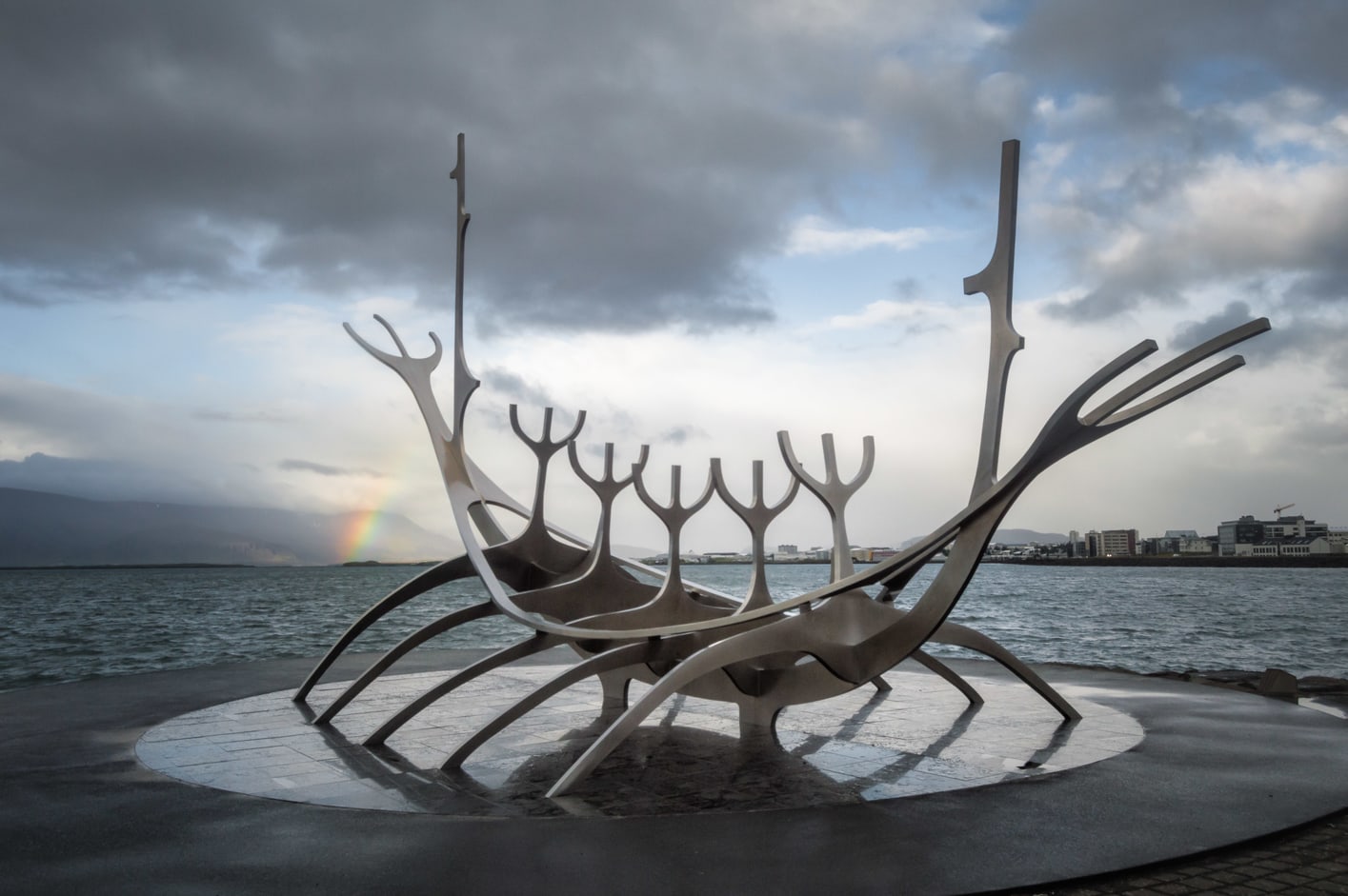
Day 1: Arrive in Iceland + Reykjavik (30mi/45 mins)
I suggest ending your day at the Perlan Museum, which has an incredible planetarium that’s included in your admission ticket. It’s also worth having dinner at the rotating glass dome restaurant, where, if you’re lucky, you’ll be able to see the Northern Lights. The museum is about a 30-minute walk from downtown Reykjavík. If you don’t want to walk all that way, you can use the City Card to take public transportation. The card covers unlimited bus rides through downtown Reykjavík, plus free admission to the city’s top attractions and a ferry ride to Viðey island.
If you ask me, there is no better way to start your route along Route 1 in Iceland than from the nation’s capital. Be sure to check out all my tips on what to see in Reykjavík here.
Day 1: Hotels on Iceland’s Ring Road
Since your Iceland Ring Road trip starts in Reykjavík, I suggest staying near Laugavegur street, one of the liveliest parts of the city. It’s the first must-see on Iceland’s Ring Road.
Below are the Reykjavík hotels we’ve stayed at and recommend:
- Reykjavík Residence Apartment Hotel
- Midgardur by Center Hotels – the most recent accommodation we booked in Reykjavík
- Brim Hotel
Day 2: Iceland’s Golden Circle (75mi/1 hr. 40 mins)
The next morning, you’ll start driving Iceland’s Ring Road. If you don’t have your rental car yet, pick it up first thing in the morning and head towards one of the most popular routes on the island, the Golden Circle.
On this route, you’ll get to see the famous landscape that gives Iceland its title of the Land of Ice and Fire. Without a doubt, this is the best way to start your Iceland Ring Road trip (even though technically, the Golden Circle isn’t part of the Ring Road).
I share everything you need to know in our guide to the Golden Circle, but below I’ll give you some essential tips. This way, you can make the most of the second day of your Ring Road itinerary.
The must-see stops during this day include Thingvellir National Park, the Strokkur Geyser, and the Gullfoss waterfall.
Thingvellir National Park is one of the top Golden Circle attractions you can’t miss. This is the region where the North American and Eurasian tectonic plates meet, so the park is full of fractures and crevices. You can walk through the Almannagjá rift to see the cliffs and ravines created by the two plates pulling away from each other. I also highly recommend this snorkeling tour in the Silfra fissure for a one-of-a-kind experience.
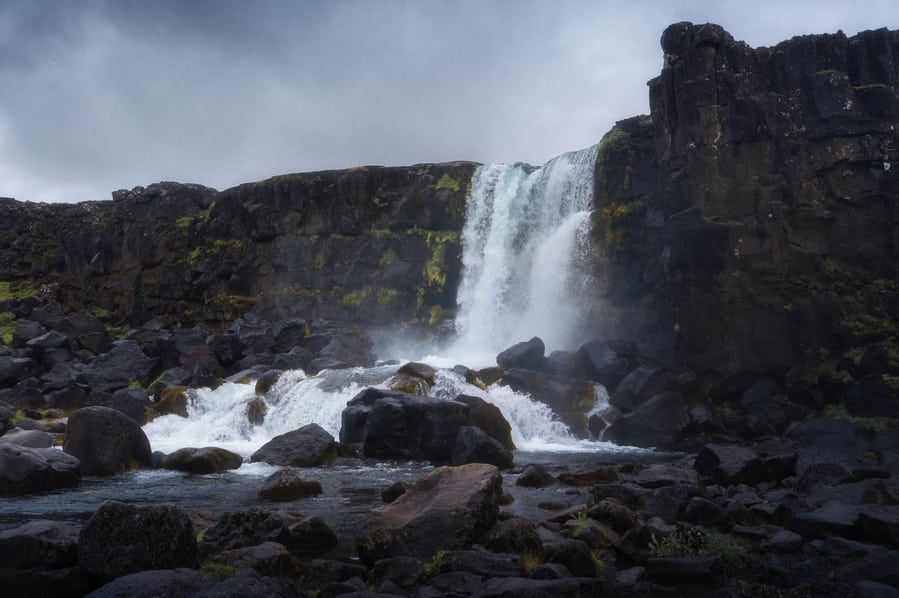
Day 2: Iceland’s Golden Circle (75mi/1 hr. 40 mins)
Strokkur Geyser, another essential stop, is about a quarter of a mile from the famous Geysir, which has been inactive for many years. Even so, it launches a jet of steam and water about 100 feet in the air. The water is nearly 200°F and is one of the most spectacular sights to see in the Golden Circle.
The third place you must visit is the Gullfoss waterfall, one of the most impressive waterfalls on the island. The cascading water seems to disappear into the depths of the earth, creating an ethereal ambiance. The waterfall is part of the Hvítá river, so if you enjoy water sports, you can spend the afternoon doing some river rafting on this tour.
Along with these three main attractions, if you like hiking, I recommend visiting the Bruarfoss waterfall. If you choose to go, I suggest saving the Strokkur Geyser for the next day, first thing in the morning.
Day 2: Hotels on Iceland Ring Road
If you’re traveling during the Northern Lights season in Iceland, stay as close as possible to the Gullfoss Waterfall, since it’s one of the best places to see the Northern Lights on the Ring Road.
These are the hotels that I recommend you stay in this night to continue your route along the Ring Road the next day:
- Hotel Grimsborgir – our favorite hotel so far
- Litli Geysir Hotel – the best option during summer
- Hotel Gullfoss – the best choice during Northern Lights season
Day 3: Seljalandsfoss + Skógafoss + Black Sand Beach (120mi/2.5 hrs.)
If you didn’t see Strokkur Geyser the day before, get up early and visit it at sunrise today. It’s worth it! I also recommend taking a small detour to see the Kerid Crater before you continue driving Iceland’s Ring Road. The crater has a perfect circular shape with a gorgeous aquamarine lake inside. The blue water against the red volcanic rock of the crater makes this a true natural wonder and something you must see while you’re on Iceland’s Route 1.
After that, continue your Ring Road Iceland itinerary. I suggest traveling in a counterclockwise direction, which would make the first stop the Seljalandsfoss waterfall. It has a nearly 200-foot drop and is part of the Seljalands River. Not only is it encapsulated by a beautiful natural landscape, but you can also walk behind the falls.
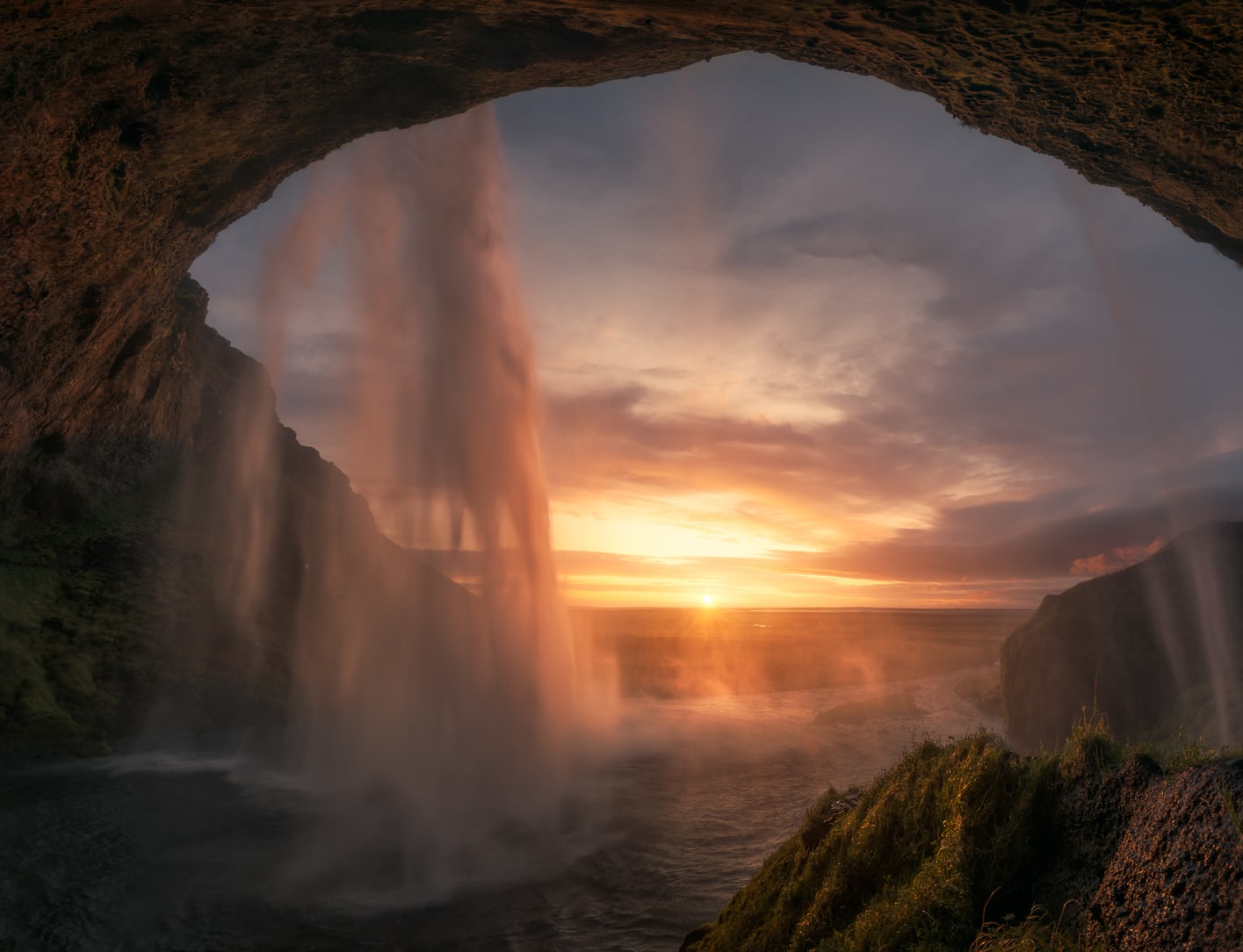
Day 3: Seljalandsfoss + Skógafoss + Black Sand Beach (120mi/2.5 hrs.)
Right next to the Seljalandsfoss waterfall is the Gljufrafoss (Gljúfrabúi) waterfall. This is a little secret as lots of tourists don’t know about this pretty waterfall since it’s inside a cave. For this reason, it’s also known as the Hidden Waterfall or Secret Waterfall of Iceland.
Then, continue following the length of Iceland’s Ring Road to the Skógafoss waterfall, one of the most famous falls in Iceland. This one also has a drop of nearly 200 feet, plus it’s over 80 feet wide, so it’s quite a sight. You can view it from below, or gaze at it from above if you’re willing to climb the 400 or so steps. This area is lovely in summer and winter, so it’s a stop you don’t want to miss on your Ring Road itinerary.
If you have time, you can take another detour from Iceland Route 1 and go to Solheimasandur Beach. Here, you’ll find the DC Plane Wreck, the site of the 1973 American plane crash. This site has become so popular that they have closed the road to vehicles. The only way to get there is by taking this shuttle.
Finally, you can end the day at the Dyrhólaey Lighthouse, which is an incredible lookout point at sunset. There are actually two viewpoints; the first looks out over Reynisfjara Beach and its stunning volcanic formations, while the second looks out over the Dyrhólaey Arch and the wide expanse of Solheimafjara Beach.
Day 3: Hotels on Iceland Ring Road
For night three, I recommend staying in Vík í Mýrdal, a southern village on the coast that has nice hotels and restaurants. If you’re traveling during Northern Lights season, you’ll be close to Reynisfjara Beach, which is one of the best places to see them on Iceland’s coastal Ring Road.
These are the best hotels you can find in Vík í Mýrdal and that will fit perfectly into your Ring Road itinerary:
- Hótel Kría – our usual accommodation during photography tours
- Guesthouse Carina – another one of our top favorites
- Puffin Hotel Vík – best budget-friendly option
Day 4: Fjaðrárgljúfur + Skaftafell + Ice Cave (125mi/2 hrs. 15 mins)
Start your fourth day on Iceland’s circle road by enjoying the sunrise on Reynisfjara Beach. Better known as The Black Sand Beach of Iceland, Reynisfjara stands out for its basalt columns, Reynishverfi, where puffins nest during the summer.
The Black Beach is also famous for Reynisdrangur, three basalt formations that rise over 195 feet out of the sea. A local legend says that trolls were dragging a ship to shore when the sun rose and left them petrified. A more modern story says that a woman was taken by two trolls, and they all froze during the night.
After visiting Reynisfjara, take Iceland Route 1 towards the Fjaðrárgljúfur canyon, where you’ll witness one of the most incredible landscapes on the island. The icy waters that melted from the glaciers ended up eroding the land and creating this deep canyon. The erosion process continues today, and this geological wonder is a must-see on Iceland’s Ring Road.
In winter, the majestic landscape is covered with snow, while in the summer, everything turns green. That said, the canyon is beautiful at any time of the year. Plus, if you’re renting a 4×4, you can visit the Fagrifoss waterfall while you’re there.
The third stop along Iceland’s coastal Ring Road is the Skaftafell National Park, where you’ll find the first glacial tongues of the Vatnajökull glacier, the largest in Europe. The park has nearly two acres of untouched nature, including the Svartifoss waterfall, one of the most popular places in the park. This waterfall is especially beautiful because it’s surrounded by black volcanic rock that forms hexagonal basaltic columns. The shape inspired the architects of the Hallgrímskirkja church in Reykjavík.
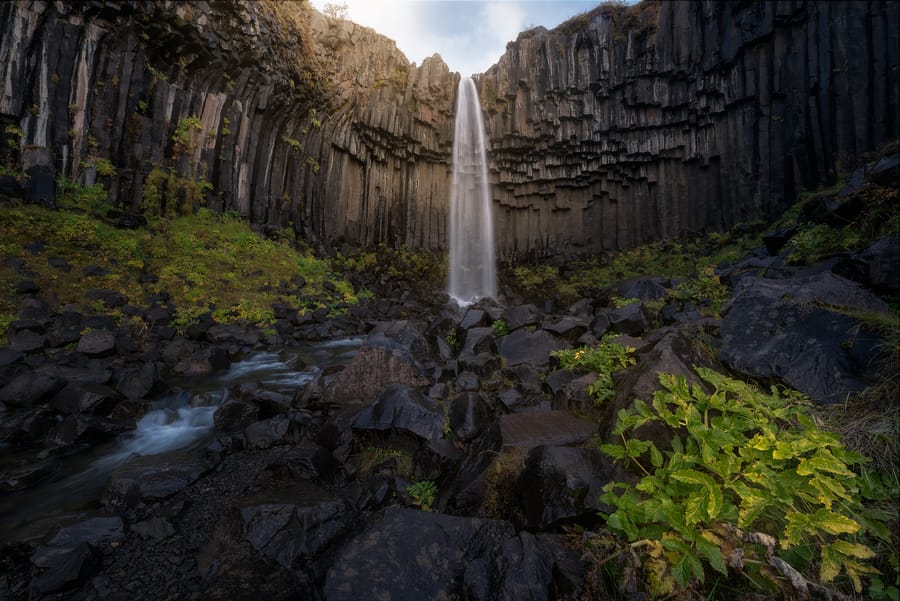
Day 4: Fjaðrárgljúfur + Skaftafell + Ice Cave (125mi/2 hrs. 15 mins)
As if that weren’t enough, perhaps the most impressive part of Skaftafell National Park is the natural ice caves. You’ll need a guide with you to visit these caves, so I suggest booking this excursion in advance. I prefer this tour because it allows you to explore the blue ice cave in small groups and learn how glaciers form. Plus, you get to walk through the Vatnajökull glacier. I guarantee this is one of the best things you’ll see on your Iceland Ring Road trip.
Day 4: Hotels on Iceland Ring Road
Although there are hotels near Skaftafell National Park, this area is not very good for seeing the Northern Lights. My advice is, after finishing the ice cave tour, take the Ring Road about 30 miles to sleep near Diamond Beach and Jökulsárlón, which are the best places to see the Northern Lights in Iceland. This is where we will start the fifth day of our Ring Road itinerary.
These are the best Ring Road hotels in this area:
- Skyrhúsid Guest House – we’re planning to stay here during our next trip
- Hali Country House – we stayed here on our first trip to Iceland
- Gerdi Guesthouse – we usually stay here during our photography tours
Day 5: Diamond Beach + Jokulsarlon + Stokksnes (75mi/1.5 hrs.)
I suggest starting the day by watching the sunrise over Diamond Beach; the orange glow over the ice is mesmerizing. Photos can’t do it justice, as the sunlit glare juxtaposes the icy blue landscape in beautiful contrast. I’m sure this will be one of the highlights of your 10-day Ring Road itinerary.
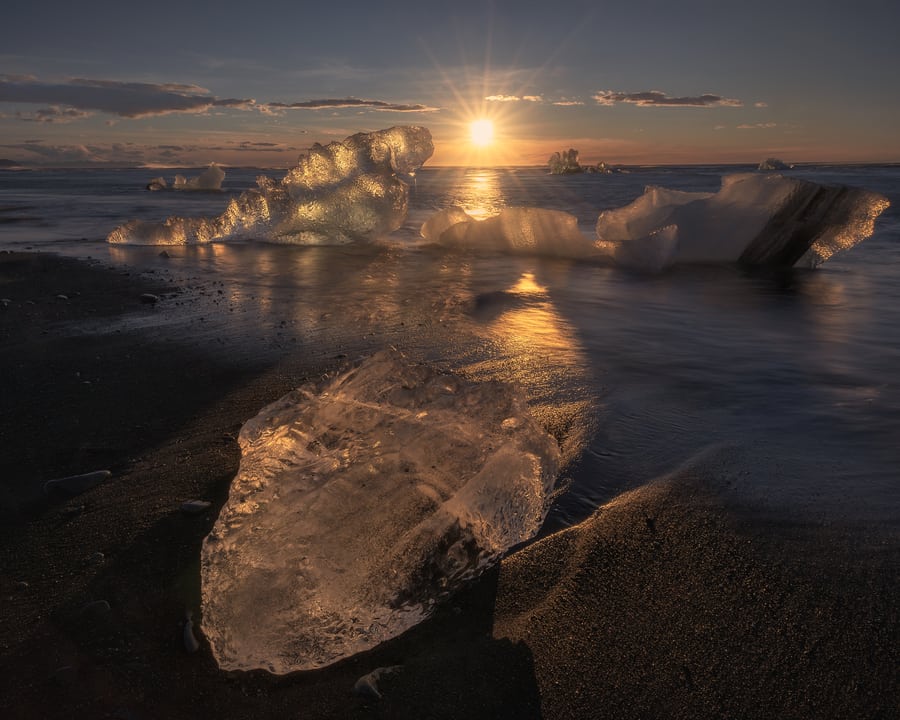
Day 5: Diamond Beach + Jokulsarlon + Stokksnes (75mi/1.5 hrs.)
The ice along this black beach comes from the Jökulsárlón glacier lagoon, which is located just behind the beach. I recommend this zodiac tour through the glacier lagoon if you want to see how the large blocks of ice break off the glacier and topple into the water. If you’re lucky, you might spot some seals playing with the ice or relaxing on top of one of the blocks.
Nearby is the Fjallsárlón lagoon, which isn’t as popular as Jökulsárlón, but it just as beautiful. It’s also not nearly as crowded with tourists. Just behind Fjallsárlón is the Öræfajökull volcano, the largest active volcano in the country at over 6,900 feet.
After this interesting visit, follow the Ring Road map to the Hoffel thermal baths. Here, you’ll find five hot tubs submerged between rocks. Soaking here while enjoying spectacular mountain views is the best way to recover your strength after driving Iceland’s Ring Road.
Alternatively, you could go to the Hvalnes lighthouse or to the black beach of Stokksnes to watch a gorgeous sunset. Personally, I prefer watching the sunset from the lighthouse, but if you’d rather bypass the extra traveling, that’s fine.
Of course, something you must do is try the incredible lobster sandwich that they serve in Hafnarbuðin. It’s without a doubt one of the greatest experiences along the Ring Route in Iceland, especially if you’re a foodie.
Day 5: Hotels on Iceland Ring Road
One of the best hotels on the Ring Road in Iceland is the Viking Café, especially if you want to see the sunset and sunrise over Stokksnes Beach. However, the accommodation has very few rooms and they fill up quickly, so here are some other good options in the nearby town of Höfn:
Day 6: Flögufoss + Hengifoss + Stuðlagil Canyon (155mi/3 hrs. 15 mins)
If you chose to watch the sunset from the Hvalnes lighthouse yesterday, then today you can enjoy a magnificent sunrise from Stokksnes Beach. This is where the Vikings series shot its Viking village scenes. To get to Stokksnes, you’ll have to cut through the Viking Café property. So, if you aren’t staying at this hotel, you’ll have to pay an entrance fee.
Even so, I think Stokksnes Beach is a must-see on Iceland’s Ring Road. The incredible black sand dunes with the imposing Vestrahorn mountain in the background is one of the most unique sights along Highway 1 in Iceland.
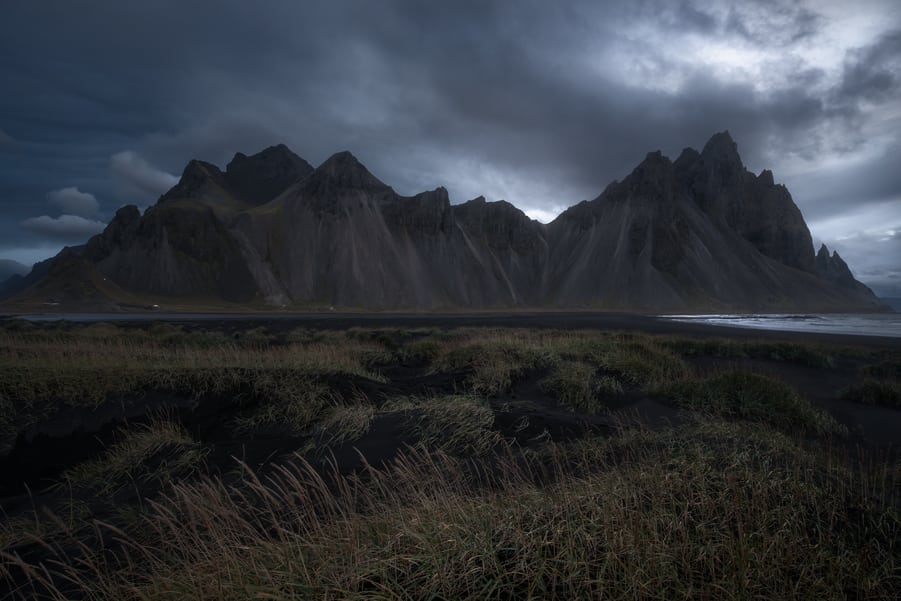
Day 6: Flögufoss + Hengifoss + Stuðlagil Canyon (155mi/3 hrs. 15 mins)
As we continue traveling Iceland’s coastal Ring Road, we’ll swing to the east. The first stop is the Flögufoss waterfall, one of the most beautiful waterfalls in Iceland. Its waters spill nearly 200 feet before passing under an impressive stone arch.
Next, head towards Egilsstaðir, making a quick detour to see the Klifbrekkufoss waterfall. The city of Egilsstaðir is on a plain that created the Lagarfljót river and has become, over the years, an important urban hub. From this city, you can visit the three most important eastern fjords: Vopnafjörður, Reyðarfjörður, and Seyðisfjörður.
Then, it’s time to visit one of the best waterfalls in Iceland, Hengifoss. At 420 feet, it’s one of the highest and most impressive waterfalls in the country, and an Iceland Ring Road must-see. As you approach, you can see and hear the force of the water cascading over black basalt walls striped with red clay. Plus, you can find another waterfall, Litlanesfoss, along the way. It’s about 100 feet tall and surrounded by basalt columns that form a narrow gorge. The path to these two falls is well-traveled and takes about 45 minutes to an hour to walk.
If you’re driving Iceland’s Ring Road in the summer, you’ll have more hours of daylight. This means you may have time to visit Studlagil Canyon, one of the most spectacular and remote places in east Iceland. The basalt columns, which you can view from both sides, change colors with the seasons.
Day 6: Hotels on Iceland Ring Road
After traveling over 150 miles on Iceland Route 1, and doing the waterfall hike, I recommend staying in some of the best hotels in this area of Iceland’s circle road:
- Hótel Valaskjálf – we stayed here on our first trip
- Gistihúsið – Lake Hotel Egilsstaðir
- Icelandair Hotel Herad
Day 7: Selfoss + Dettifoss + Mývatn (175mi/4 hrs. 10 mins)
Today, you’ll have about 4 hours of driving Iceland’s Ring Road ahead of you, so it’s best to get up bright and early.
Your day begins with three important waterfalls, all of which originate from the country’s longest river, Jökulsá á Fjöllum. You’ll hear about these three falls in any guide to Iceland’s Ring Road: Selfoss, Dettifoss, and Hafragilsfoss.
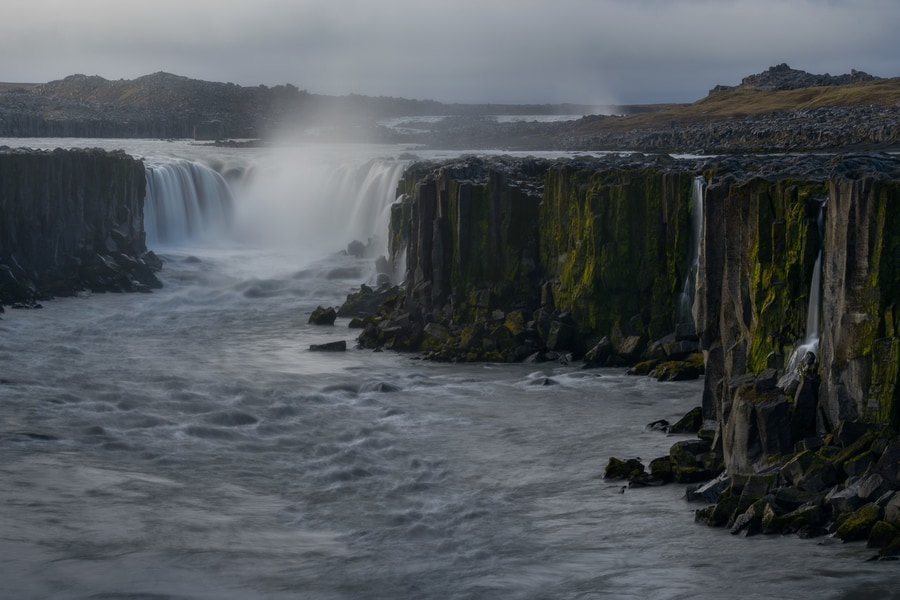
Day 7: Selfoss + Dettifoss + Mývatn (175mi/4 hrs. 10 mins)
If you’re driving a 4×4, I suggest taking Route 864 to see the waterfalls from the east. If you don’t have a 4×4, it’s best to view them from the west via Route 862. Don’t worry, it’s still a fantastic view! After seeing all three waterfalls, make a stop in Vesturdalur to see the Hljóðaklettar volcanic rock formations next to the Jökulsá á Fjöllum river.
To continue your Ring Road trip, head towards Hverir, one of the most active geothermal areas in Iceland. The area is full of fumaroles, pools of boiling mud, and a spectacular lunar landscape. You must follow the marked trails and paths, not only to avoid burning yourself but to help preserve the landscape.
Also, don’t forget to visit the Grjótagjá lava cave near Lake Mývatn, and the extensive Dimmuborgir lava fields. Finally, if you want to enjoy incredible views of Lake Mývatn, take a hike to the Hverfjall volcano.
To end the day, there is nothing quite as relaxing as a bath in the hot springs of Lake Mývatn. I highly recommend you book your admission in advance here to ensure that you get in on the seventh day of your Ring Road itinerary.
Day 7: Hotels on Iceland Ring Road
For day 7, you’re doing a lot of driving on Iceland’s Ring Road, so treat yourself to a stay at one of the best hotels near Lake Mývatn:
- Fosshótel Mývatn – we stayed here on our last trip
- Hotel Laxá
- Skútustadir Guesthouse
Day 8: Húsavík + Goðafoss + Hvítserkur (195mi/3 hrs. 50 mins)
Day 8 of your 10-day itinerary on Iceland’s Ring Road is when you’ll start moving towards the western part of the island.
First, follow your Ring Road map to Húsavík to enjoy a whale watching tour. Húsavík is one of the best places to see whales in Iceland and is often referred to as the whale capital of Europe. There is almost a 100% chance of seeing whales in this city. We took this 3-hour tour.

Day 8: Húsavík + Goðafoss + Hvítserkur (195mi/3 hrs. 50 mins)
After the whale-watching tour, it’s time to go to the Goðafoss waterfall, also known as “Waterfall of the Gods.” It’s 40 feet tall and nearly 100 feet wide, and the cascading water splits in two thanks to the waterfall’s rocky ledge. It truly is a unique attraction along Iceland’s Ring Road.
If you’re driving a 4×4 and you’re up for a 25-mile drive, make a detour to the Aldeyjarfoss waterfall, which is known for its volcanic basalt landscape.
Then, follow the Ring Road towards Blönduósbær and Laugarbakki. Both towns have nice accommodations where you can spend the night.
Day 8: Hotels on Iceland Ring Road
My hotel recommendations for day 8 are located between Blönduósbær and Laugarbakki. In these towns, you’ll find two great locations for seeing the Northern Lights: Hvítserkur and Skardsviti Lighthouse.
These are the best accommodations you’ll find on our map of Iceland’s Ring Road:
- Hotel Laugarbakki
- Hvammstangi Cottages – we stayed here on our last trip
- Brimslóð Atelier Guesthouse
Day 9: Snæfellsnes Peninsula (210mi/4 hrs. 30 mins)
Day 9 on Iceland’s Route 1 will take you on the most worthwhile detour yet. If you don’t have enough time for a 10-day Ring Road itinerary, skip this day. However, if you have the time, take this opportunity to see one of the most beautiful corners of Iceland, the Snæfellsnes Peninsula.
Although there is a lot to see in Snæfellsnes, the most important place, Kirkjufell Mountain, is about two hours from the starting point from Iceland’s Ring Road. That being said, my advice is to visit the mountain at sunset. So, it may be better to travel around the peninsula in a clockwise direction, so you end the day at Kirkjufell.
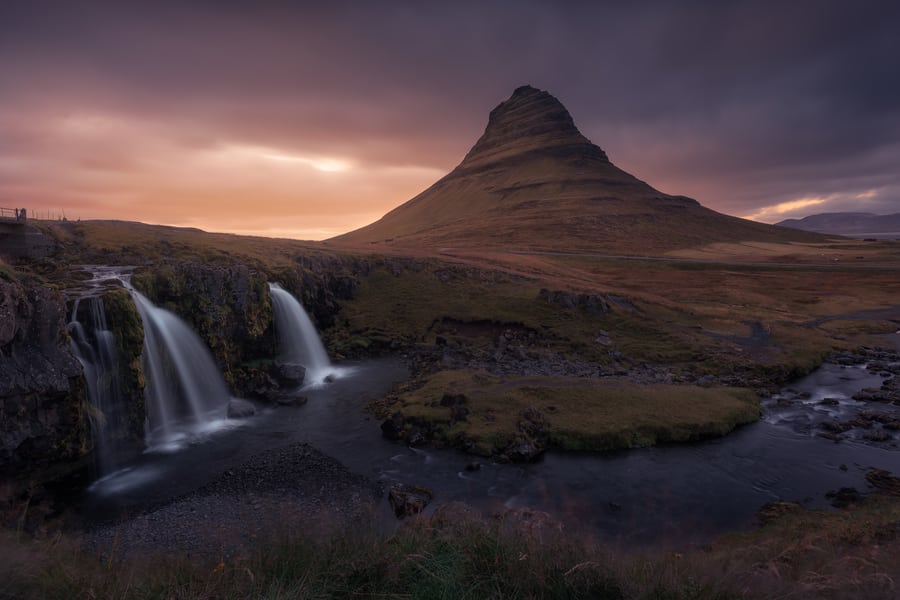
Day 9: Snæfellsnes Peninsula (210mi/4 hrs. 30 mins)
If you do a Ring Road tour in Iceland during autumn, you should start by visiting the Hraunfossar waterfall. It is one of the least known waterfalls in Iceland, but it looks stunning against the autumn foliage.
Once you’re on the peninsula, go to the Gerðuberg basalt rock cliffs, which lie within the Hnappadalur Valley. It’s difficult to believe that these columnal cliffs were made naturally, and it’s something you must see for yourself. You should also check out the black sand beach of Djúpalónssandur as well as Ytri Tunga beach, where you’ll likely see wild seals.
Next, make your way to the Rauðfeldsgjá Gorge, a mythical-looking ravine that will leave you speechless. Here, you can also see the Arnastapi seaside cliffs and lava arch, considered one of the best natural arches in the world. Vatnshellir Cave is also worth a visit, and I suggest booking a tour in advance since the last group leaves at 3:00 p.m.
Then, head over to the Snæfellsjökull National Park, Iceland’s only national park that stretches all the way to the coast
Finally, cross the Snæfellsjökull National Park, Iceland’s only national park that stretches all the way to the coast. You’ll end up at Kirkjufell Mountain, the most photographed mountain in the country. Kirkjufell is one of the best places to see the Northern Lights on the Snæfellsnes Peninsula, along with the Black Búdir Church, which is just 30 minutes away.
Day 9: Hotels on Iceland Ring Road
It will be a long and intense day, but also a marvelous one. Be sure to get plenty of rest before embarking on the last day of this 10-day Ring Road itinerary. To help you out, here are the best hotels near Snæfellsnes:
- Arnarstapi Hotel
- Kirkjufell Guesthouse and Apartments – we stayed here with our photography tour group
- Við Hafið Guesthouse
Day 10: Blue Lagoon and Reykjanes Peninsula (155mi/3 hrs.)
The last day of this Iceland round trip starts with a departure from the Snæfellsnes Peninsula as you head towards the Reykjanes Peninsula. Conveniently, this is where the airport is, as well as the famous Blue Lagoon. However, before arriving, I suggest taking a 40-minute detour to visit the Glymur waterfall, one of the highest in Iceland at over 650 feet.
The first thing you should do when you get to the Reykjanes Peninsula is to visit the geothermal area of Krýsuvík and Seltún, one of the most incredible parts of the region. Then, set aside a few hours to enjoy a relaxing bath in the Blue Lagoon, one of the most famous hot springs in Iceland. To learn more about this thermal bath, check out our ultimate guide on the Blue Lagoon.
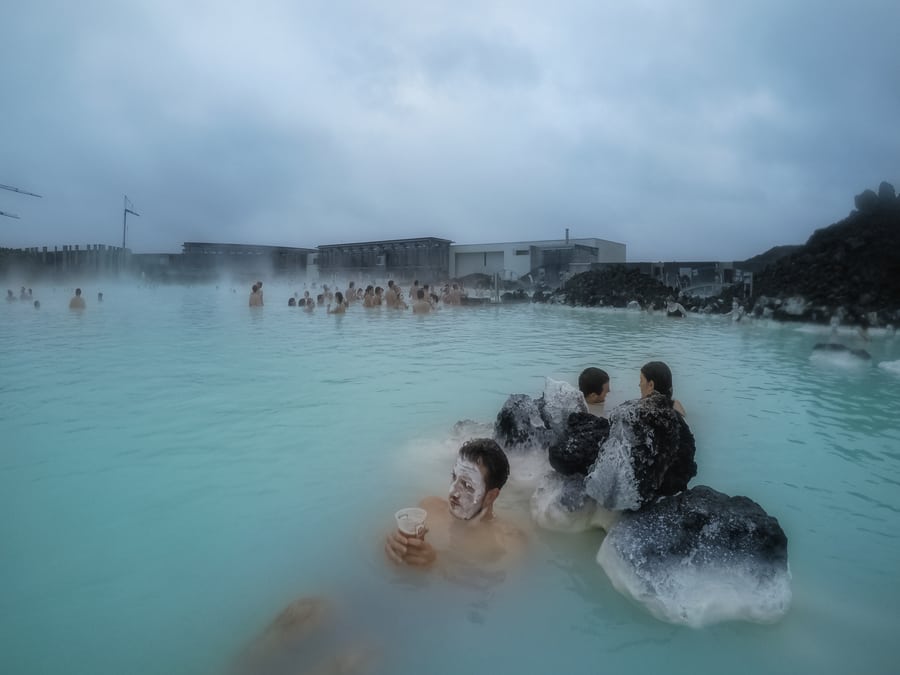
Day 10: Blue Lagoon and Reykjanes Peninsula
Once you feel rested, hop in the car, and visit the Gunnuhver hot springs. You won’t be able to swim here, but you can watch the activity in this boiling mud crater. Finally, end your day at the Valahnúkamöl cliffs and the Brimketill area and watch the sunset.
If you’re lucky enough to be able to spend one more night in Iceland, and it’s Northern Lights season, head to the area around lakes Kleifarvatn and Gígvatnsvatn. Another of my favorite locations to see the aurora borealis is Straumur við álverið.
Day 10: Hotels on Iceland Ring Road
Depending on the time your flight leaves the next day, I recommend the following options to finish your route along the Ring Road:
- The Retreat at Blue Lagoon Iceland – if you want to end your trip in the lap of luxury
- Northern Light Inn – we’ve stayed here once and it’s close to the Blue Lagoon
- Airport Hotel Aurora Star – our first choice if we want to stay near the airport
How to drive Iceland’s Ring Road
Driving on the Ring Road in Iceland is totally safe. You can take any type of vehicle since the road is paved. However, if you’re traveling in winter, I recommend renting a 4×4 for more traction and safety. Also, if you’re going to be taking any detours on F-roads, you’ll want a 4wd car.
Please note that Iceland’s Ring Road rarely has more than two lanes. Other than some urban areas near Reykjavík, the road is quite narrow. Therefore, always drive within the speed limit and pay attention to any oncoming traffic.
If you’ve never been to the island, you might have some doubts about how to drive on the Ring Road in Iceland. Our guide on how to drive in Iceland have you covered! Anyway, I’ll share the most important information you need to safely enjoy your Iceland Ring Road trip.
How long does it take to drive Iceland’s Ring Road?
The Ring Road in Iceland is a little over 820 miles long and it takes 15 and a half hours to drive the whole thing. When planning a Ring Road itinerary, I suggest giving yourself at least 6 days to go around the island and see the essentials.
Personally, I think it’s ideal to have 10 days to travel Highway 1 in Iceland. This will give you time to take some detours to other worthwhile sites. However, everyone has their own interests, so feel free to adapt your route. Below, I’ve added sample Ring Road tours in Iceland for 6, 7, and 8 days.
Best time to drive Iceland’s Ring Road
Any time of the year is a good time to drive on the Ring Road in Iceland. The road is completely paved and, even in winter, you shouldn’t have any problems as long as there aren’t any road closings due to snowstorms. That said, I always recommend checking the Icelandic road conditions on Road.is. You should also check the weather forecast on Vedur.is.
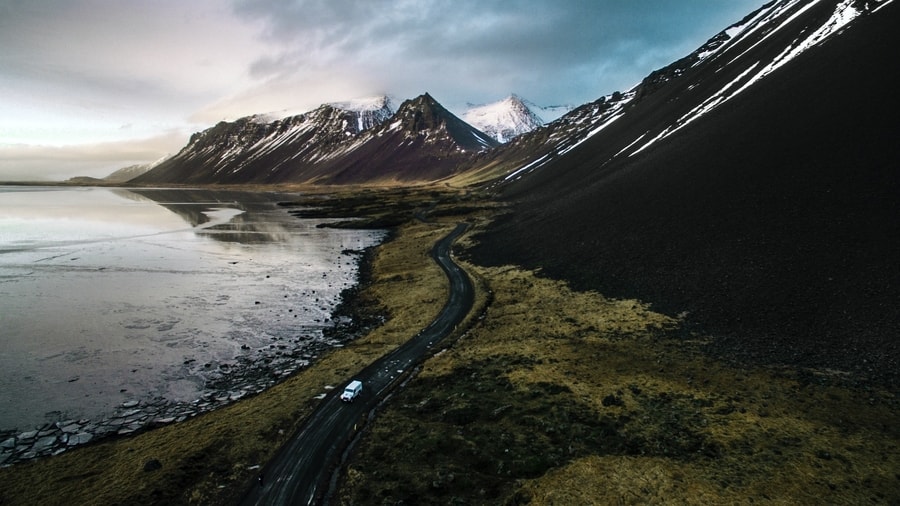
Best time to drive Iceland’s Ring Road
Keep in mind that during the winter months, you won’t be able to travel on any F-roads. They’re too dangerous during this time of year, so they’re all closed off.
Can I drive Iceland’s Ring Road in winter?
Driving Iceland’s Ring Road in winter is fine. During these months, they remove the snow that may have accumulated on Highway 1 quite quickly. However, in the event of heavy snowfall, some sections may be temporarily closed off.
Even though the Ring Road is paved, always drive within the speed limits, and always have your lights on. Even if you’re on a straightaway, never exceed the speed limit. Doing so could cause you to get a speeding ticket or hit an animal crossing the road.
Also, make sure you have a full tank of gas and regularly check that you’ll be able to get to the next gas station without problems, even if you have to take a detour. Always keep food and water on hand too.
Which way do you drive the Ring Road in Iceland?
Most guides to Iceland’s Ring Road suggest going in a counterclockwise direction, especially in the summer. This is because the most important attractions are in the south, so you can afford to spend more time there and cut back on the itinerary a bit later.
However, things are less stable in the winter, so I recommend checking the Vedur.is weather forecast before venturing out on the road. If the forecast looks good for the next 7 days, drive along Iceland Route 1 in a clockwise direction to make sure you see the north and east, since the roads in this region are most likely to be affected by snow. If the first few days of the forecast don’t look so good, take the summer (counterclockwise) route.
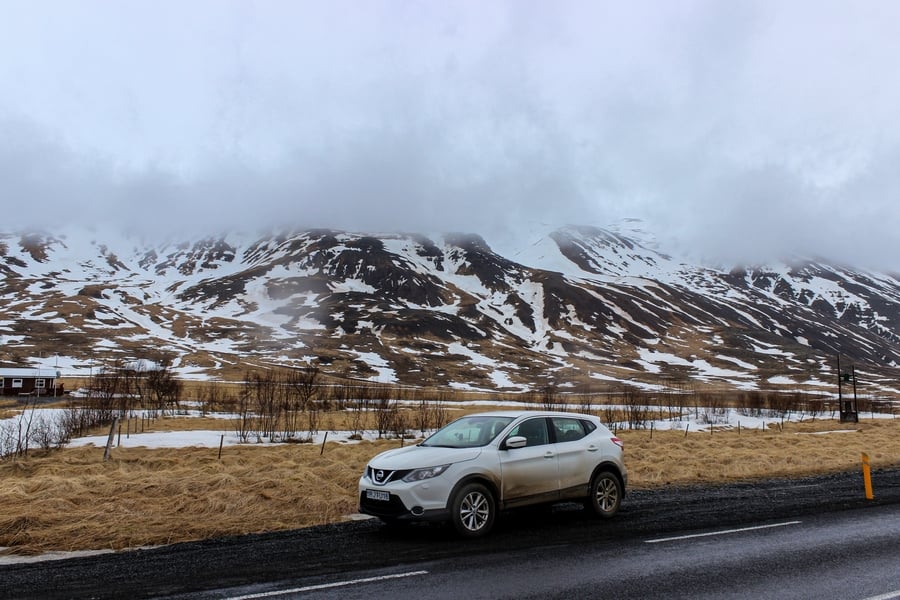
Which way do you drive the Ring Road in Iceland?
Keep in mind that if you’ve already booked some hotels, you should drive the Iceland circle road in a counterclockwise direction. If you’re traveling on a budget, you want to book the hotels well in advance.
Best car to drive Iceland Ring Road
Any car can drive Iceland’s coastal Ring Road without problems. However, if you want to access some detoured areas, you have to take F-roads, which require a 4×4. Plus, if you’re traveling to Iceland in the winter anyway, renting a 4×4 is your best option for navigating ice and snow.
In any case, be sure to rent a car in Iceland with unlimited mileage. The Ring Road is a little over 820 miles long, and if you take a few detours, you’ll end up racking up even more mileage. So, if you think you’re getting a good deal on rental car mileage, it could end up costing a lot more in the end.
Gas Stations in Iceland Ring Road
On paved roads like Iceland Route 1, you will have no problem finding gas stations. However, to the north and east, the distance between gas stations becomes longer. Always make sure you have enough gas to make it to the next stop, taking into account any detours you might make.
I advise against deviating too much from your Ring Road map unless you’re certain that you can reach the next gas station without any problems.
Here is a map with the gas stations in Iceland so you’re never left without an empty tank:
Other tips to drive Iceland’s Ring Road
You don’t need to rent a car that reaches high speeds because, on paved roads such as Highway 1 in Iceland, you aren’t allowed to exceed 90 km/h (55 mph). If you turn onto an unpaved road, you can’t go over 80 km/h (50 mph). In urban areas, the speed limit is just 50 km/h (30 mph.)
When you rent a car in Iceland, I suggest purchasing SCDW or Super CDW insurance. This comprehensive insurance policy will cover damage to your rental car in the event of an accident. If you’re going to drive mostly on the Ring Road, I don’t think you need gravel protection insurance, but I opt for it, just in case. I also don’t recommend sand and ash protection, as I’ve never purchased it and I’ve been fine.
I definitely don’t think you need anti-theft insurance. Iceland is a very safe country and it’s highly unlikely that you’ll run into problems with theft. If you want more information on this topic, I recommend our guide on renting a car in Iceland.
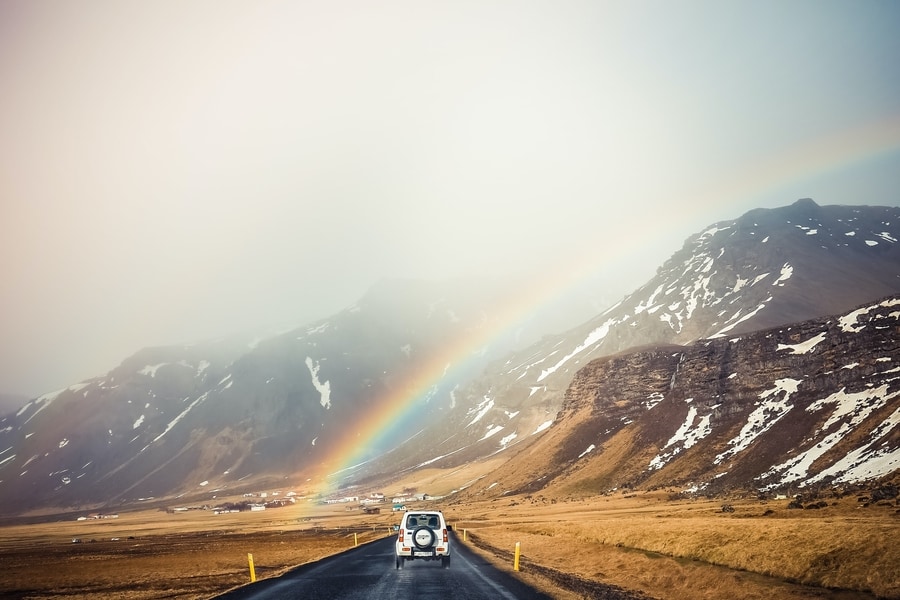
Other tips to drive Iceland’s Ring Road
Along with the tips above, make sure you always wear your seatbelt and drive with your lights on during the day and at night. Also, don’t just park your vehicle wherever you want, but only in designated areas. If you must stop in the middle of the road, make sure it’s someplace where the car is visible from any angle.
I should also mention that there is one toll in Iceland, at the Vaðlaheiðagöng tunnel, which goes from Mývatn to Akureyri. When making your Ring Road trip in Iceland, you’ll probably have to go through this tunnel when you go north. The fee is 1,500 ISK (about $10), which you can pay in advance on the website or up to three hours after passing through. If you don’t pay, the rental company will charge you 2,500 ISK (about $18).
Iceland Ring Road Tours
If you can’t or don’t want to drive the full length of the Ring Road in Iceland, you can book an Iceland Multi-Day Tour. This way, you can enjoy all the attractions along Route 1 in Iceland without worrying about driving.
Here are the best Ring Road tours in Iceland and the itinerary for each.
6-day Iceland Ring Road Tour
You can enjoy a 6-day itinerary along Iceland’s Ring Road by booking this tour. It includes accommodation, guides, transportation, and meals, so you don’t have to worry about a thing. If you travel to Iceland with kids, they must be at least 8 years old to participate in this tour. It starts and ends in Reykjavík and costs $1,492.
This is a route along the Ring Road in 6 days:
- Day 1: Golden Circle and the south of Iceland – Seljalandsfoss, Skógafoss, Reynisfjara
- Day 2: Vatnajokull and Jökulsárlón glacier lagoon
- Day 3: Eastern Fjords – Djúpivogur, Egilsstaðir
- Day 4: Lake Mývatn area
- Day 5: Whale tour in North Iceland – Dalvik, Siglufjordur
- Day 6: West Iceland – Kirkjufell, Barnafoss, Deildartunguhver, Reykholt
7-day Iceland Ring Road Tour
If you can spend one more day on the Ring Road, I suggest booking this 7-day tour. Like the previous one, it also starts and ends in Reykjavík and includes accommodation, guides, transportation, and meals, all for $1,682.
This is the 7-day itinerary on Iceland’s Ring Road:
- Day 1: Gullfoss, Geysir, Thingvellir (Golden Circle) and southern Iceland
- Day 2: Vík, Skaftafell, Jökulsárlón Glacier Lake, and Höfn
- Day 3: Eastern Fjords – Djúpivogur, Egilsstaðir
- Day 4: Dettifoss, Lake Mývatn, Goðafoss, and Akureyri
- Day 5: Whale tour in North Iceland – Dalvik, Siglufjordur, Trollaskagi, Bifrost
- Day 6: Borgarfjörður, Reykholt, Hraunfossar, Borgarnes
- Day 7: Borgarnes, Snæfellsnes Peninsula, Reykjavik
8-day Iceland Ring Road Tour
Lastly, if you have the time for an 8-day itinerary along Iceland’s Ring Road, I recommend this all-inclusive tour.
This is the 8-day Ring Road itinerary:
- Day 1: Reykjavík
- Day 2: Gullfoss, Geysir, Thingvellir (Golden Circle) and southern Iceland
- Day 3: Vík, Skaftafell, Jökulsárlón Glacier Lake, and Höfn
- Day 4: Eastern Fjords – Djúpivogur, Egilsstaðir
- Day 5: Dettifoss, Lake Mývatn, Goðafoss and Akureyri
- Day 6: North Iceland whale tour in Dalvik – Siglufjordur, Trollaskagi, and Bifrost
- Day 7: Borgarfjörður, Reykholt, Hraunfossar, Hvalfjordur, and Reykjavík
- Day 8: Reykjavík
Now that you have the guide to Iceland’s Ring Road, you can enjoy your trip to the fullest without worry. Remember that the itinerary can always be modified according to your tastes and interests, although the one I recommend here has all the essential places to see in Iceland.
If you have any questions, you can leave me a comment and I will try to help you as much as I can. Enjoy your tour of Iceland’s Ring Road!
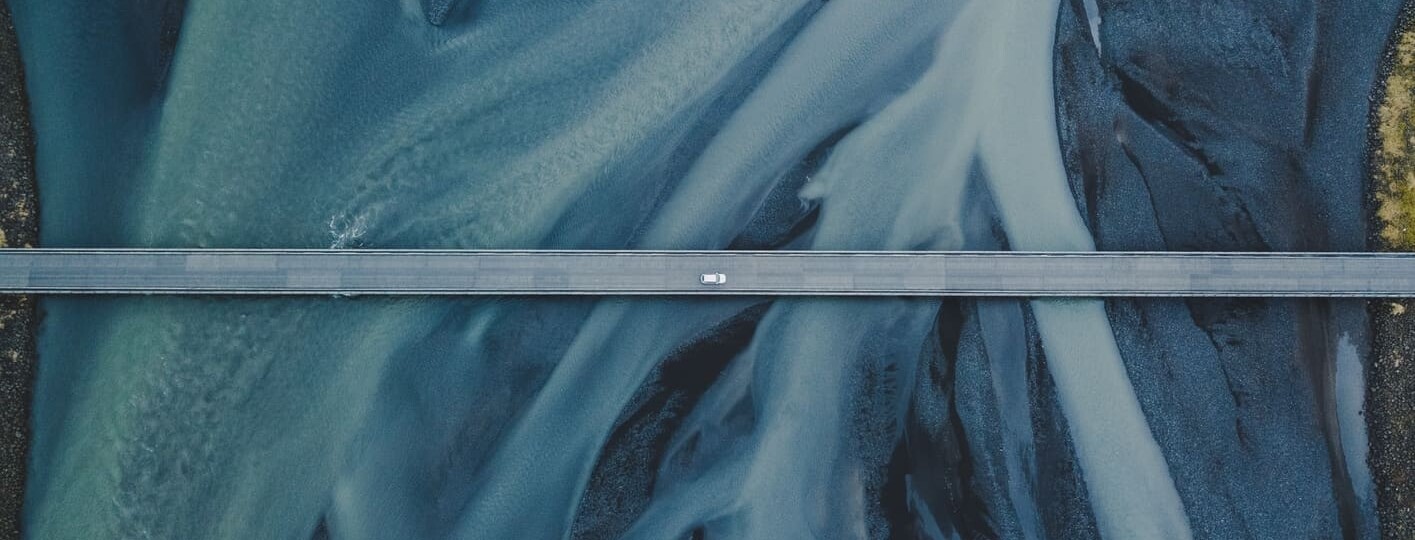
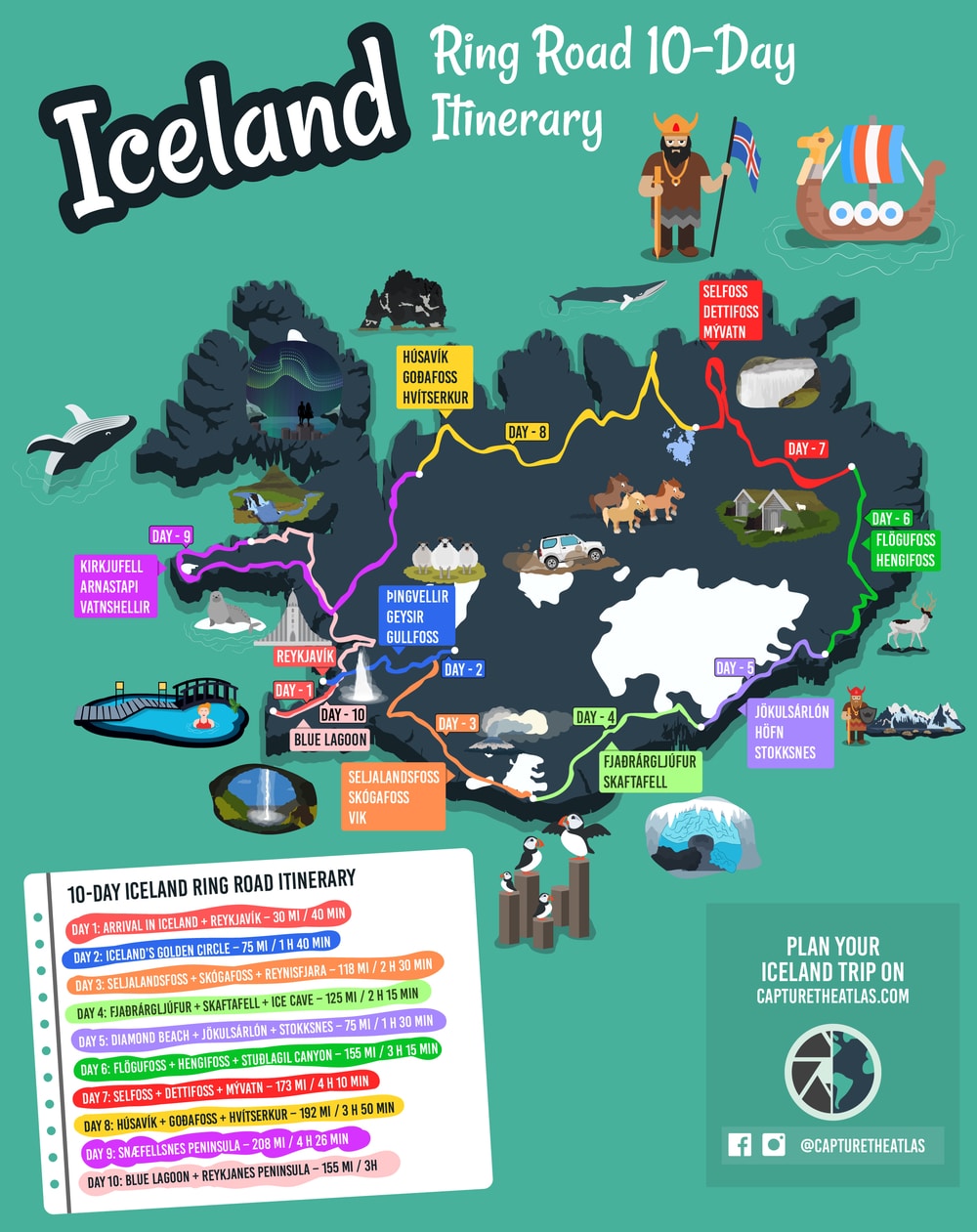
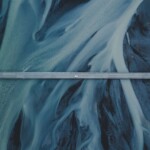
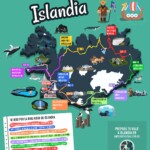
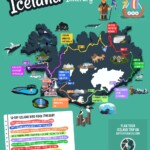
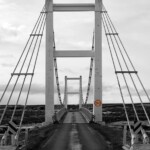
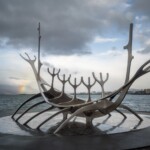
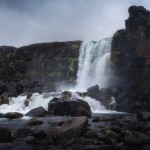
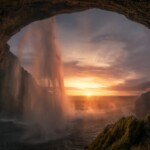
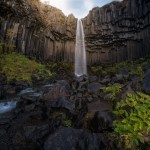
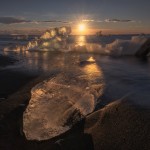
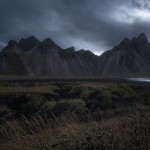
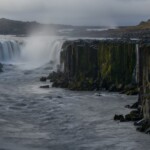
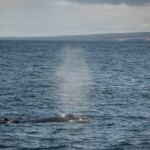
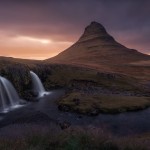
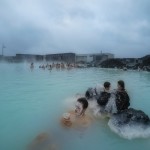
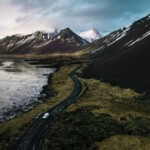
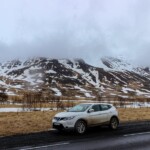

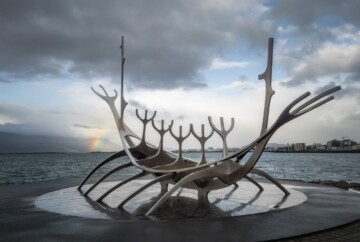
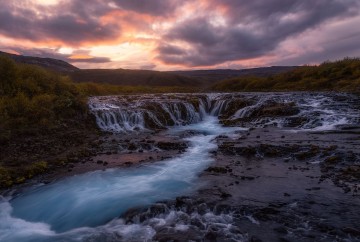
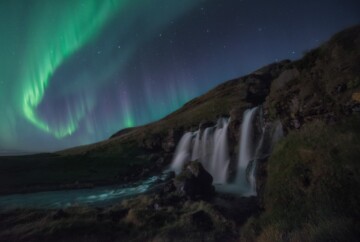







Do you offer your services to plan this trip for a group of 4? We are 2 couples, fit and adventurous and don’t mind driving ourselves around the island to see the amazing sights you recommend. But trying to make all the reservations ourselves is quite daunting! Do you offer these services, and if so, what would the cost be (approximately) per person?
Hi Allie,
We don’t organize travel itineraries, but we do lead photography tours in Iceland. Of course, those tours are very niche and designed for photographers and photo enthusiasts. Otherwise, it might be worth looking at some Iceland vacation packages to help you budget. I hope this helps!
Ascen
they got mcdonalds in iecland?
Hey there,
They actually don’t! 😛 It’s a nice change of pace!
Hello.
My wife and I are from Australia and we plan to visit Iceland from Mid June to first week in July allowing 3 weeks in a Motorhome.
I was hoping you might be able direct me to another link that would provide some assistance re our planning to cover this time. We are keen walkers experienced in terms of navigation and quite fit. I also enjoy photographing landscape shots so I’m really looking forward to this trip.
Cheers
Lynton.
Hi Lynton, that sounds like a great trip. You will have time to go around the Ring Road and also check the Snaefellsnes Peninsula and visit the Icelandic Highlands.
Let me know if you have any questions,
Ascen